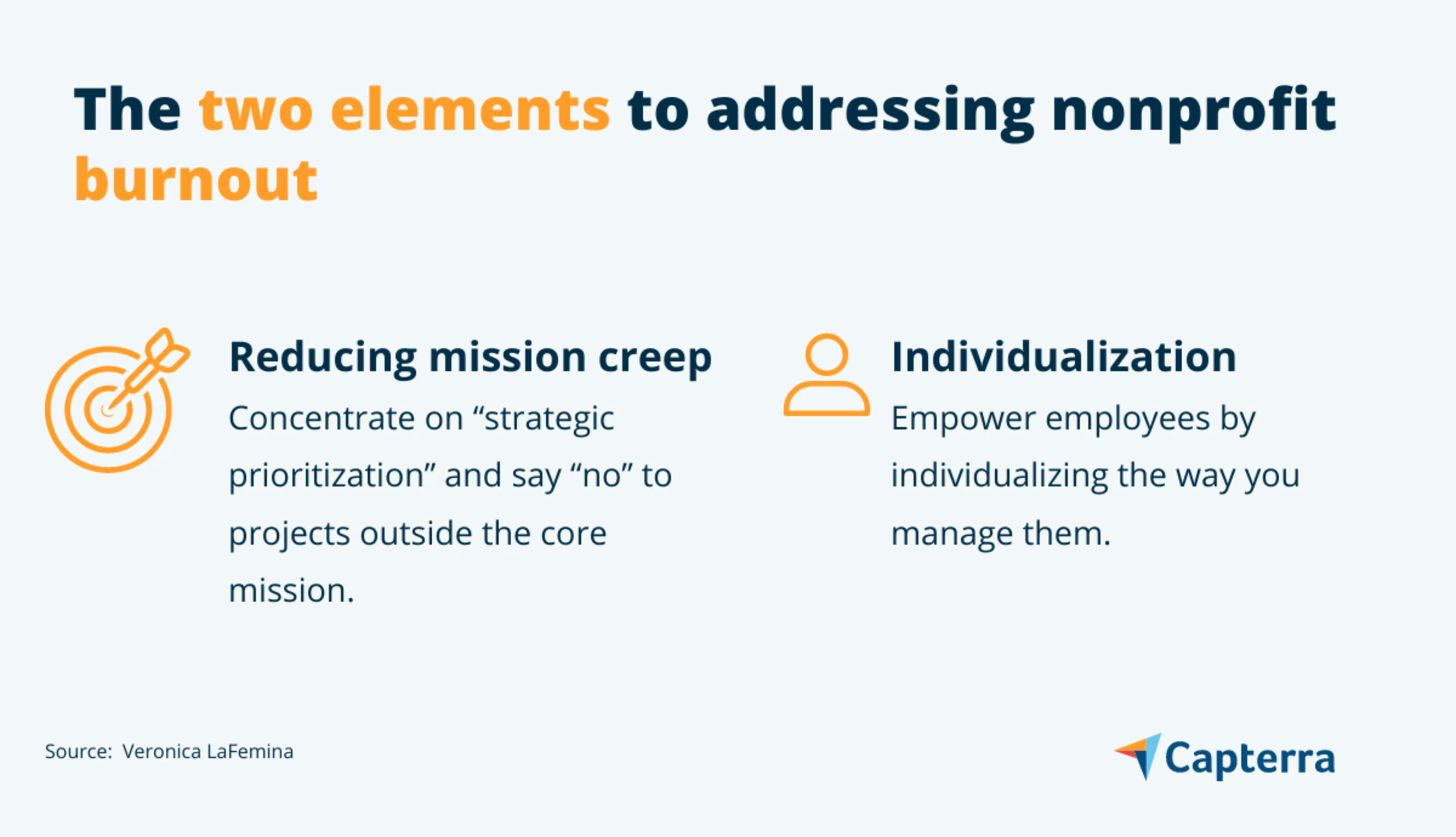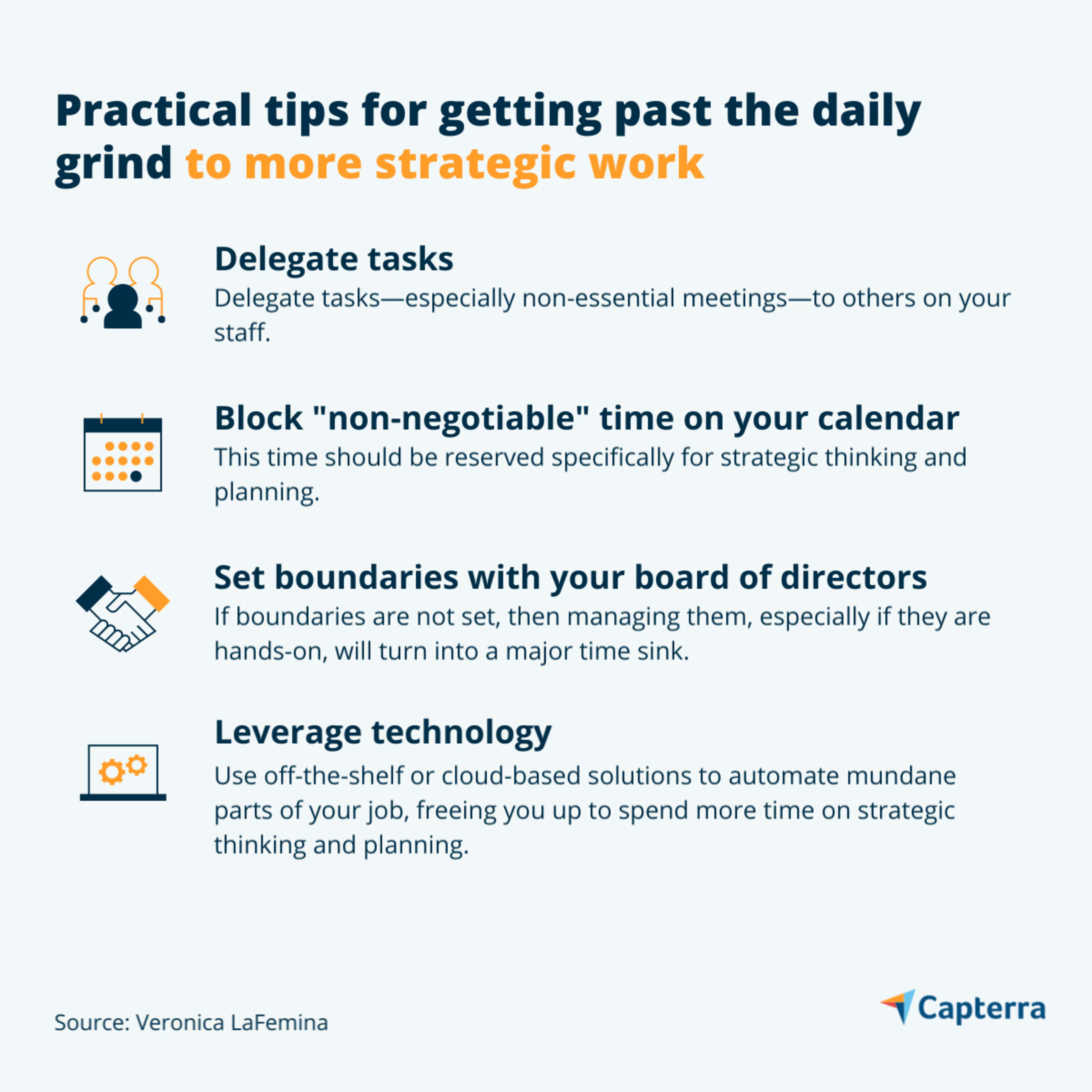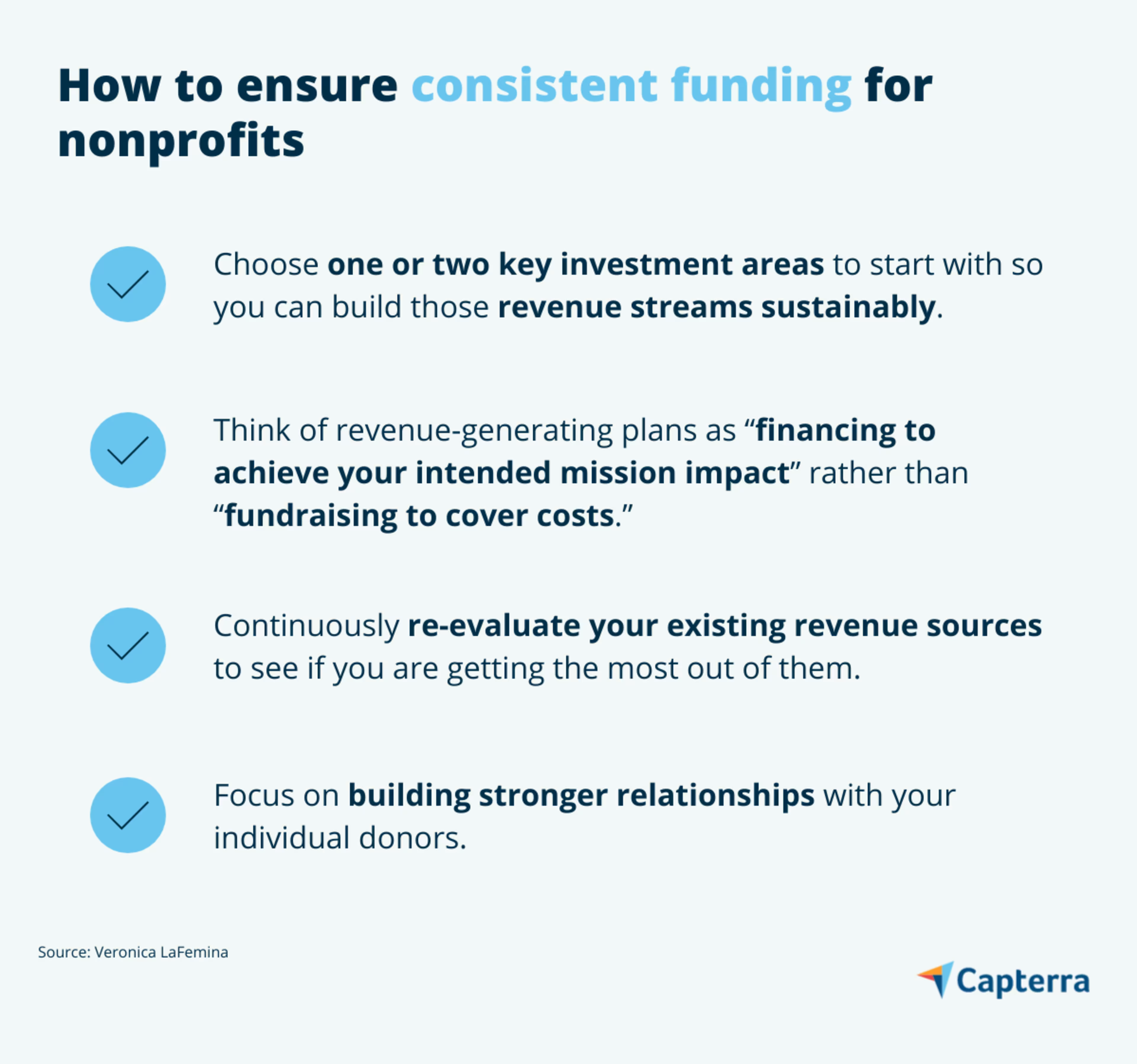Capterra interviews Veronica LaFemina on the changes in nonprofit culture and how leaders can overcome burnout.
The pandemic drove nonprofits to embrace new technologies and new ways of working. While some of these changes were sustainable, others were temporary measures only, says Veronica LaFemina, founder and CEO of LaFemina & Co., a woman-owned advisory firm that helps nonprofits strategically plan for the future.[1]
Today, nonprofit leaders need to analyze what they learned from the past three years and figure out what strategies from the pandemic-era—and pre-pandemic-era—still serve them, and what may be necessary to let go. Pinpointing what still works will help nonprofit leaders prevent staff burnout and mission creep, gain strategic clarity, and drive future success.
Continue delivering on your organization’s mission by addressing employee burnout
The emergence of B corporations and environmental, social, and governance (ESG) initiatives have shifted the landscape of purpose-driven careers, which in turn is affecting nonprofit organizations’ ability to attract and retain staff at all levels.
“Twenty years ago, nonprofits offered employees a greater sense of purpose than they could hope to achieve in the commercial sector,” says LaFemina. “Now, people have more options for fulfilling work. Many nonprofit professionals are leaving the sector for good, and folks who may have been interested in nonprofit work in the past are finding purpose in other emerging sectors.”
Employee burnout is also hitting nonprofits much harder than the corporate sector in the post-COVID era, LaFemina says. To retain critical staff and continue delivering on your organization’s mission, leaders must pay careful attention to signs that individual workers may be overwhelmed, fatigued, or stressed.
"If you notice burnout symptoms in a team member, it’s important to take time to understand their struggles and find ways to offer relief."


Veronica LaFemina
nonprofit leadership consultant
Happily, LaFemina does see some positive trends emerging in the nonprofit sector that will help with staff retention. This can include sabbaticals for employees, and “fair pay is obviously important,” she says.
“Focus on long-term strategies, not stop-gap measures, to maintain workers’ joy and energy,” says LaFemina. “Burnout can’t be cured with webinars or a day off now and then.”
But she sees mission creep as a common cause of burnout. Nonprofit leaders need to work toward true strategic clarity to better motivate staff and make them feel valued. This means concentrating on “strategic prioritization” or slowing down, learning to focus, and saying “no” to projects outside your core mission.

“Individualizing the way you manage employees can help,” says LaFemina. Steps you can take in this regard include:
Understand how individuals prefer to be recognized for their successes.
Learn how to prioritize where employees spend their time and effort.
Figure out how to integrate more tech-savvy, and—increasingly—remote workers into your organizational culture.
Professional development opportunities can make a difference, especially when it comes to retention. To grow their skills, help each employee identify their unique strengths and work together to chart a course forward that includes mentoring, building soft skills, creating on-the-job learning opportunities in a remote environment, and leveraging technology effectively to improve collaboration, coordination, and time management, says LaFemina. These efforts can help your employees be more successful today while preparing them to step into leadership roles in the future.
How to gain strategic clarity moving forward
Gaining strategic clarity all comes back to being crystal clear about your organization’s core identity. “Your identity starts with your vision, mission and values,” she says, “but it’s essential to also determine your organization’s role in your community or the issue you’re addressing, your main areas of focus, and what you don’t do.” This will make it easier to make better decisions about what your team should—and shouldn’t—be working on, enabling you to reduce burnout while growing your organization’s impact.
“When everyone—staff members as well as donors—is certain about your prime objectives, they have your explicit permission to focus on what really matters,” LaFemina says.

Ensure consistent financial support by diversifying revenue streams
In times of economic uncertainty, charitable donations decline. This happened post-COVID, when donations declined precipitously between 2021 and 2022—only the fourth time in 40 years that donations did not increase year over year, according to the Giving USA 2023 report.[2] Total giving decreased 3.4% in 2022 to $499.3 billion in current dollars, a drop of 10.5% when accounting for inflation.
The current decline comes at a time when many nonprofits—especially ones providing services to those in urgent need—report an increase in requests for help. To fill that gap, nonprofit leaders “must consider how best to diversify their revenue streams to ensure a steady flow of funds,” says LaFemina. For some organizations, this may mean leaning into a fee-for-service model for specific programs. For others, a focus on improving or enhancing each area of their individual giving program may be the better strategic move. She recommends the following:

Make sure your software helps you accomplish your nonprofit’s mission
As a continuous stream of new nonprofit technologies keep coming to market, the question, says LaFemina, is which tools make the most sense for your organization and how can you optimize their usefulness? “This is an important question. A lot depends on your technology choices, and how you deploy them.”
It’s critical that the technology you purchase and use is actually what your staff needs in order to efficiently accomplish your nonprofit’s objectives—it’s also important that you work with the vendor you choose to make sure your team is appropriately trained. “Having competent vendor or consultant support to assist your team in effectively adopting new technologies is critical to avoid investing in tools that just sit on the virtual shelf,” she says.
Focus on your core identity for sustainable growth
When asked about tactics nonprofits can deploy to accelerate growth, LaFemina suggests taking a different approach. “In the nonprofit world, growing fast is tricky. Because of that, speed shouldn’t necessarily be your goal. Instead, aim to grow sustainably.”
Go back to your core vision, mission, values, and role, and ensure your goals and the work you choose to focus on align with those identity elements. Use your strategic identity to guide decision-making and to prevent taking on initiatives outside of your nonprofit’s specific objectives. This will help you retain your employees, maintain consistent funding, and sustain clarity as you continue to grow your successful nonprofit.
For more insights from LaFemina on nonprofit strategy, check out her previous articles:
